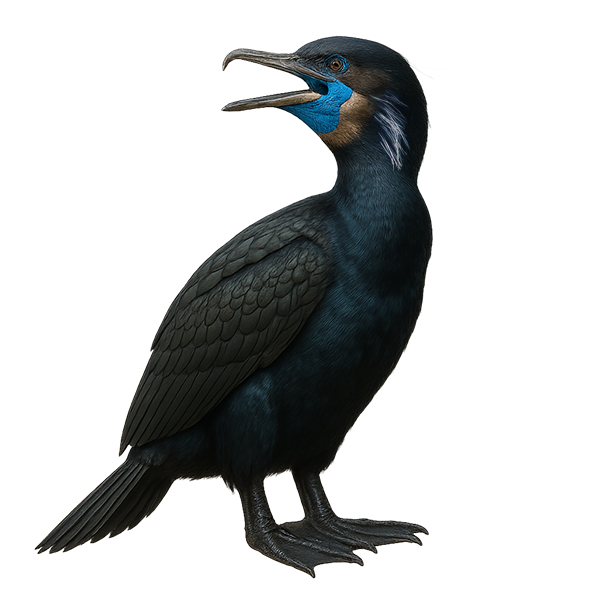Your wildlife photography guide.
Explore the brandt's cormorant in detail, study its behavior, prepare your shots.
Where to observe and photograph the brandt's cormorant in the wild
Learn where and when to spot the brandt's cormorant in the wild, how to identify the species based on distinctive features, and what natural environments it inhabits. The WildlifePhotographer app offers tailored photography tips that reflect the brandt's cormorant’s behavior, helping you capture better wildlife images. Explore the full species profile for key information including description, habitat, active periods, and approach techniques.
Brandt's Cormorant
Scientific name: Urile penicillatus

IUCN Status: Least Concern
Family: PHALACROCORACIDAE
Group: Birds
Sensitivity to human approach: Suspicious
Minimum approach distance: 10 m
Courtship display: May to July
Incubation: 27-31 jours
Hatchings: May to August
Habitat:
Rocky coasts, cliffs, estuaries
Activity period :
Primarily active during the day, with peak activity in the morning and late afternoon.
Identification and description:
The Brandt's Cormorant, or Urile penicillatus, is a medium-sized seabird known for its glossy black plumage and distinctive white plumes on its head during the breeding season. It primarily inhabits the rocky coasts of the North Pacific, from Alaska to Mexico. This cormorant is an adept diver, feeding mainly on fish and crustaceans caught underwater. During the breeding season, it forms dense colonies on cliffs, building nests with seaweed and other marine materials. Although generally silent, it can produce guttural grunts. The Brandt's Cormorant is an important indicator of the health of coastal marine ecosystems.
Recommended lens:
400mm – adjust based on distance, desired framing (portrait or habitat), and approach conditions.
Photography tips:
To photograph the Brandt's Cormorant, choose sunny mornings when the light highlights its glossy black plumage. Use a telephoto lens of at least 400mm to capture detailed images from a distance without disturbing the bird. Cliffs and rocky coasts are ideal places to observe and photograph these birds in their fishing activity. Be patient and wait for them to surface after a dive to get dynamic shots.
The WildlifePhotographer App is coming soon!
Be the first to explore the best nature spots, track rutting seasons, log your observations, and observe more wildlife.
Already 1 432 wildlife lovers subscribed worldwide

